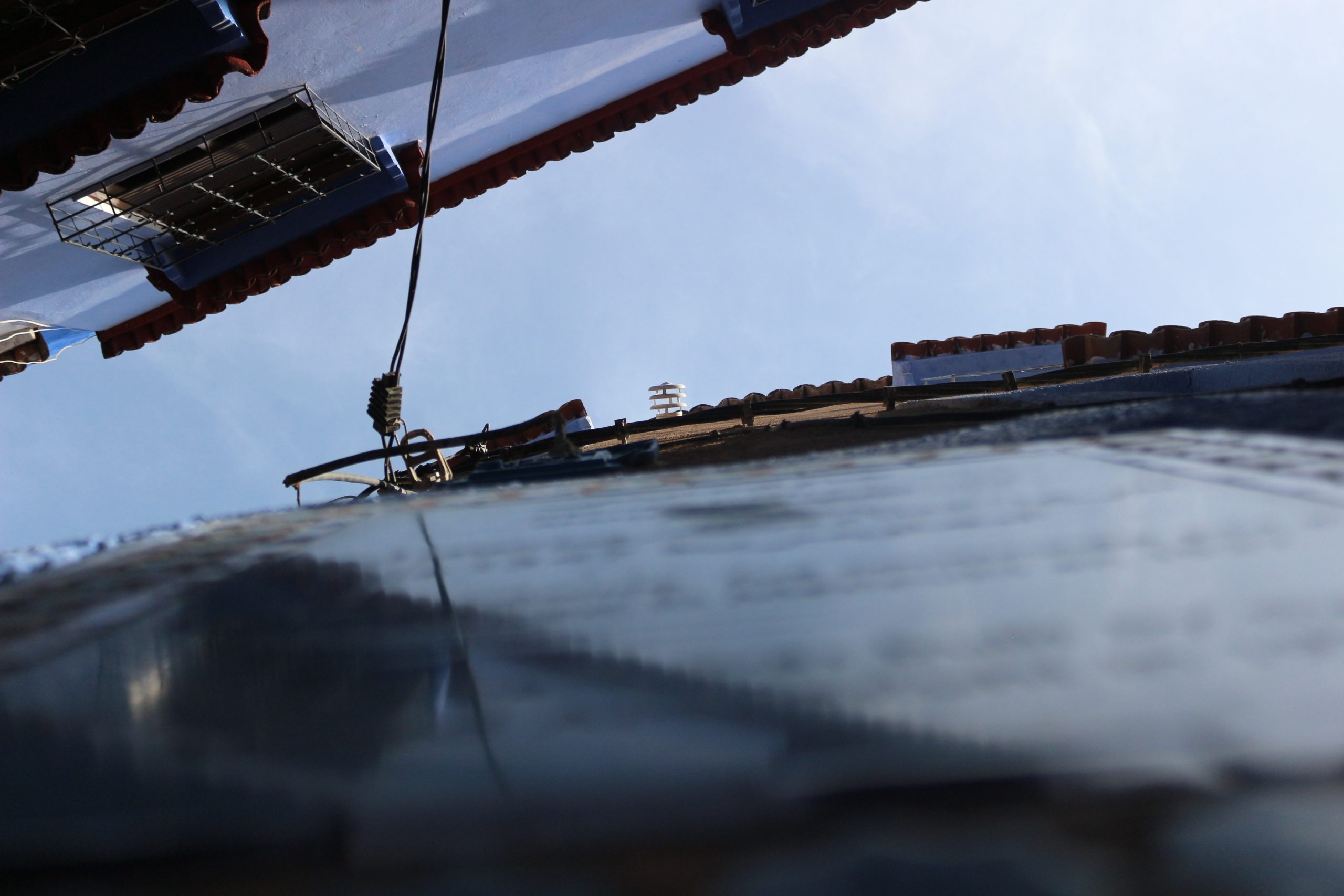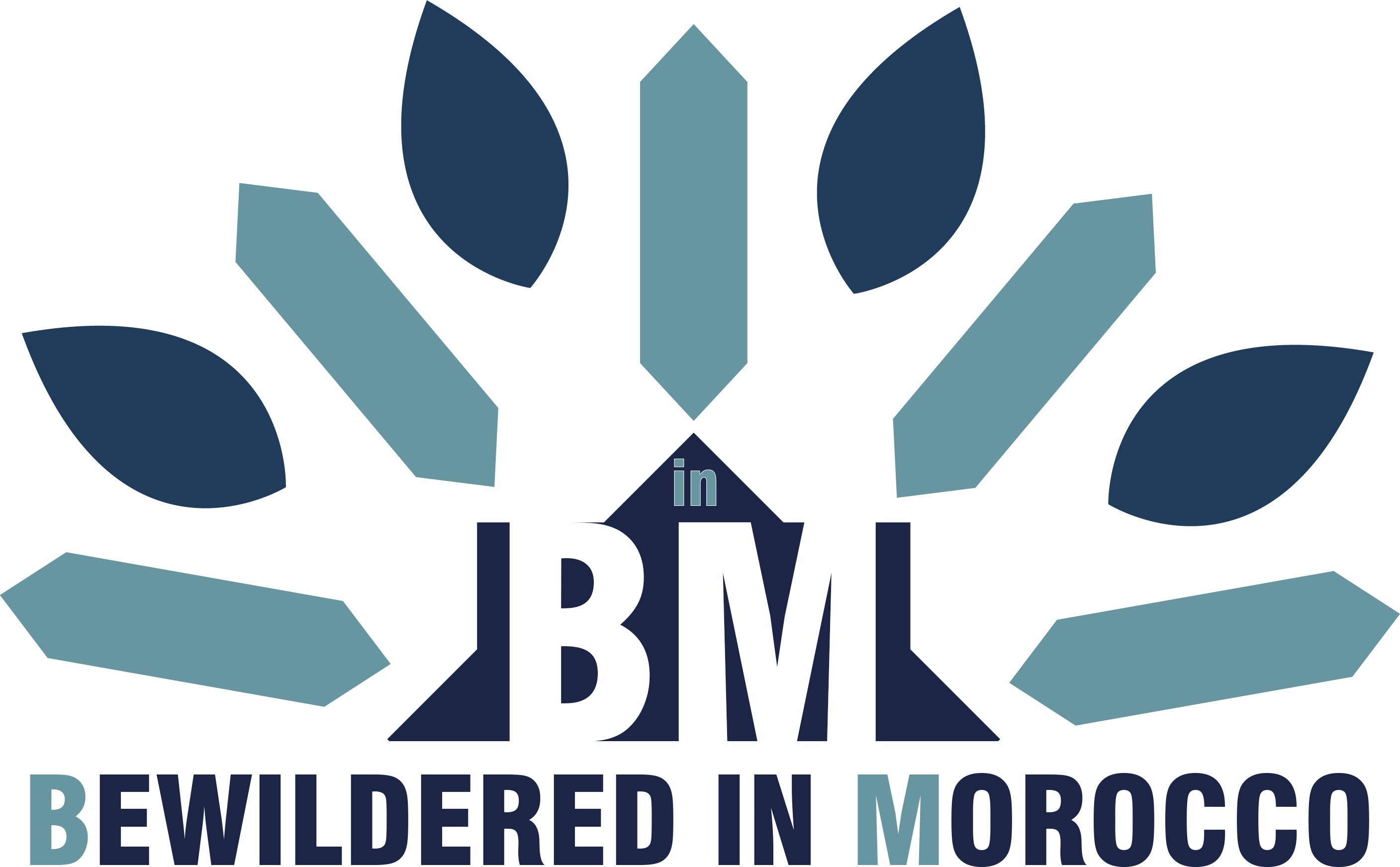Chefchaouen sits in the Rif Mountains, about 600 kilometers from Casablanca. The city is famous worldwide for one thing—its blue walls. But there's more to this mountain town than just pretty streets. After spending a full day exploring every corner, I can tell you the best places to visit in Chefchaouen and what makes each spot special.
The drive to Chefchaouen takes you through winding mountain roads. If you're coming from Casablanca, you'll pass through Fes and Ouazzane first. The journey is long, but when you see those blue buildings appear between the mountains, you'll understand why so many travelers make the trip.
Why Chefchaouen's Location Makes It Special

Chefchaouen isn't just another Moroccan city. Its geographic position in the Rif Mountains gives it a completely different lifestyle from coastal cities or desert towns. The air is cooler here, even in summer. The pace is slower. People walk instead of rush.
I arrived in the evening and found accommodation easily. Unlike Marrakech or Fes during peak season, Chefchaouen has plenty of riads and guesthouses in the old medina. The best part? Most are painted in those famous blue shades, so you wake up surrounded by blue walls every morning.
My advice: stay inside the medina walls. Yes, it costs a bit more than hotels outside the old town, but you want to be close to everything. Early morning in Chefchaouen is magical, and you don't want to miss it because you're staying far away.
The Best Time to Explore: Early Morning Magic
Here's something tourists often miss—the best time to see Chefchaouen is right after sunrise. The medina is quiet. The light is soft and golden. The blue walls look their brightest. And most importantly, you can take photos without crowds.
I woke up early and walked through empty streets. Shopkeepers were just opening their doors. Old men sat in doorways drinking their first coffee. A few cats stretched in sunny spots. This is when you see the real Chefchaouen, not the tourist version.
By 10 AM, tour groups arrive. The narrow streets fill with visitors. It becomes harder to take those perfect photos everyone wants. So set your alarm, grab your camera, and get out there when the city is still waking up.
Outa el Hammam Square: The Heart of the Blue City
Every visit to Chefchaouen starts at Outa el Hammam Square. This is the main square in the medina, and it's where locals and tourists mix. The square sits in front of the Grand Mosque, with the Kasbah on one side and cafes lining the other sides.
I sat at one of these cafes and ordered a cold orange juice. The vendor was named Said, and he told me his family has run this juice stand for three generations. His orange juice costs 10 dirhams—fresh squeezed, ice cold, and served with a smile. After walking through hot, narrow streets, nothing tastes better.
The Grand Mosque dominates the square with its octagonal minaret. Non-Muslims cannot enter, but you can admire the architecture from outside. The red-orange walls contrast beautifully with the blue buildings around it.
The Kasbah: History for 10 Dirhams
Right on Outa el Hammam Square stands the Kasbah, a fortress built in the 15th century. The entrance fee is only 10 dirhams—less than one euro. For that price, you get access to gardens, small museums, and great views from the towers.
The Kasbah gardens are peaceful. Fig trees, banana plants, and flowers grow in the shaded courtyards. You can sit on stone benches and rest from the midday heat. The museum inside shows traditional Moroccan weapons, old photographs of Chefchaouen, and examples of local crafts.
But the real reason to visit? The towers. Climb the narrow stairs to the top, and you'll see the entire medina spread below you. All those blue rooftops, the mountains behind, the minarets rising above the houses. Bring your camera—this view is worth the climb.
Getting Lost in the Blue Streets

After visiting the main square, it's time to wander. Chefchaouen's medina is small enough that you can't get truly lost, but big enough to keep surprising you. Every street looks different. Every corner reveals a new blue shade.
During my walk, I met tourists from Spain, France, and Japan, all taking the same photos—blue doors, blue walls, colorful flower pots, cats sleeping on blue steps. Everyone was smiling. There's something about these blue streets that makes people happy.
Local women sell traditional items in tiny shops. You'll see handwoven blankets, leather bags, pottery, and the famous Moroccan babouche slippers. I bought a traditional djellaba (the long robe Moroccan men wear). Wearing it made me blend in a bit more, and shopkeepers started speaking to me in Arabic instead of French.
Don't rush through the medina. Sit at a cafe. Watch people pass. Try the local specialty—goat cheese from the mountains around Chefchaouen. The cheese is white, creamy, and slightly salty. Locals eat it with bread and olive oil.
Spanish Mosque: The Best View in Chefchaouen

Everyone who visits Chefchaouen eventually asks the same question: "Where's the best view of the city?" The answer is simple—the Spanish Mosque, also called Bousafar Mosque.
This small white mosque sits on a hill overlooking Chefchaouen. The climb takes about 30 minutes from the medina. The path is clear and easy to follow—just walk uphill. Many visitors go at sunset to watch the light change on the blue buildings below.
I made the climb in the late afternoon. The view from the top is incredible. You see the entire medina—all those blue buildings packed together, the mountains rising behind, the valleys stretching into the distance. This is the photo that appears in every Chefchaouen travel guide.
The mosque itself is small and simple. It was built by the Spanish in the 1920s when they controlled northern Morocco. Now it sits abandoned, but locals maintain the area around it. You can sit on the hillside, enjoy the view, and feel the mountain breeze.
Warning: The path can be slippery after rain. Wear good shoes. Also, don't carry expensive cameras openly—while Chefchaouen is generally safe, the path to the mosque is isolated. Go with a friend or join other tourists making the climb.
Ras el Ma: Where the Mountain Meets the Medina
At the edge of the medina, you'll find Ras el Ma—a small waterfall where mountain water flows into the town. This is where local women come to wash clothes in the traditional way. The water is ice cold, coming straight from the Rif Mountains.
Small restaurants and cafes line the area. You can sit with your feet in the cool water and order mint tea. The sound of flowing water, the shade from trees, and the mountain air make this spot perfect for resting after hours of walking.
Local boys jump from rocks into the pools below the waterfall. Old men sit in plastic chairs playing cards. This is everyday life in Chefchaouen, happening right next to the tourist areas.
Planning Your Visit: Practical Information
How to Get There:The easiest way to reach Chefchaouen is by bus or shared grand taxi from Fes (about 4 hours) or Tangier (about 2.5 hours). CTM and Supratours run daily buses. A shared taxi costs more but leaves when full, not on a fixed schedule.
Where to Stay:Book a riad inside the medina. Prices range from 200-500 dirhams per night depending on the season and comfort level. Most riads serve breakfast on rooftop terraces with blue city views.
What to Bring:
- Comfortable walking shoes (the medina streets are steep and cobblestoned)
- Camera (you'll take hundreds of photos)
- Sunscreen and hat (the mountain sun is strong)
- Cash (many small shops don't accept cards)
- A jacket for evenings (mountain temperatures drop after sunset)
Best Time to Visit:Spring (March-May) and fall (September-November) offer perfect weather. Summer gets crowded with European tourists. Winter can be cold and rainy, but you'll have the medina mostly to yourself.
Why Chefchaouen Feels Different
After visiting many Moroccan cities, I can say Chefchaouen has a unique atmosphere. It's smaller and quieter than Marrakech or Fes. More relaxed than Casablanca. The blue walls give everything a calm, dream-like quality.
Locals here are used to tourists but remain friendly and helpful. Shopkeepers are less pushy than in bigger cities. You can walk the streets without constant hassles to buy something or hire a guide.
The city attracts a certain type of traveler—people who want beauty and peace, not nightlife and luxury hotels. Artists come here to paint. Photographers come for that perfect shot. Hikers use it as a base to explore the Rif Mountains. Everyone leaves feeling refreshed.
Your Chefchaouen Adventure Awaits
The best places to visit in Chefchaouen aren't hard to find—Outa el Hammam Square, the Kasbah, the blue medina streets, Spanish Mosque viewpoint, and Ras el Ma waterfall. Each spot offers something different, but together they create the complete Chefchaouen experience.
Take your time in this blue city. Don't rush from one photo spot to the next. Sit in cafes. Talk to shopkeepers. Climb to viewpoints. Taste the local cheese. Buy something handmade. Let the peaceful atmosphere sink in.
Have you been to Chefchaouen? Which blue street was your favorite? Or are you planning your first visit and have questions about the city? Share your thoughts in the comments below—I'd love to hear about your experiences or help you plan your trip to Morocco's beautiful blue pearl!
